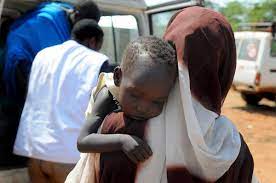March 2, 2025 – Birth defects claim the lives of approximately 300 children under the age of five every day in the South-East Asia region, according to a statement released by the World Health Organization (WHO) ahead of World Birth Defects Day.
Observed annually on March 3, World Birth Defects Day aims to increase awareness about the prevention of congenital anomalies and improve healthcare services for affected individuals. The initiative seeks to enhance the quality of care and support systems available to children and families dealing with birth defects.
“Over the past two decades, the contribution of birth defects to under-five mortality in our region has increased from 3.9 percent to 11.5 percent,” said Saima Wazed, Regional Director for WHO South-East Asia.
“Birth defects are now the third leading cause of death (11 percent) among children under five in our region—affecting approximately 300 children daily. Additionally, they cause severe morbidity, which is often overlooked or underreported,” she added.
The WHO has called on governments and health agencies to strengthen awareness campaigns and enhance health systems to address the specific medical, developmental, and psychosocial needs of individuals with congenital anomalies. Prevention, early detection, and effective management of these conditions must be prioritized, Wazed emphasized.
Birth defects not only affect the well-being of individuals but also place a significant burden on families, communities, and healthcare infrastructures. While genetic factors contribute to many congenital anomalies, several preventive measures can reduce their occurrence.
“Rubella vaccination, early identification and management of sexually transmitted infections during pregnancy, and addressing environmental factors such as exposure to pollutants, lifestyle choices, and socioeconomic conditions affecting pregnant women and fetuses are key preventive strategies,” Wazed stated.
She also urged governments to reinforce investment in women, girls, adolescents, and vulnerable populations to mitigate risks associated with birth defects.
To improve early detection and treatment, Wazed emphasized the importance of expanding newborn screening programs and investing in robust birth defect surveillance systems. These measures would help analyze and utilize data for better healthcare planning and intervention.
“Countries need to invest in establishing or strengthening birth defect surveillance systems, with a particular focus on improving the availability, analysis, and utilization of relevant data for programmatic decision-making,” she concluded.
Disclaimer:
This article is based on information provided by the World Health Organization (WHO). While efforts have been made to ensure accuracy, readers are encouraged to consult healthcare professionals and official sources for specific medical advice and policy updates related to birth defects.












